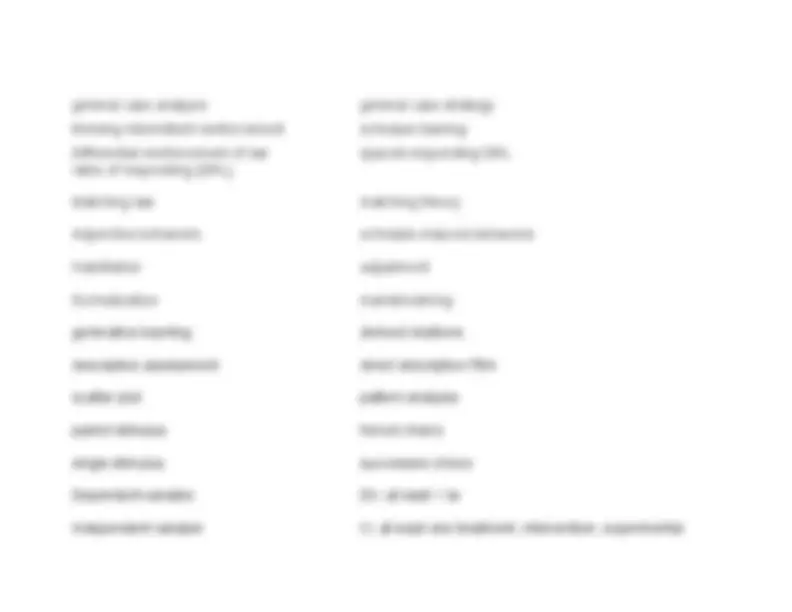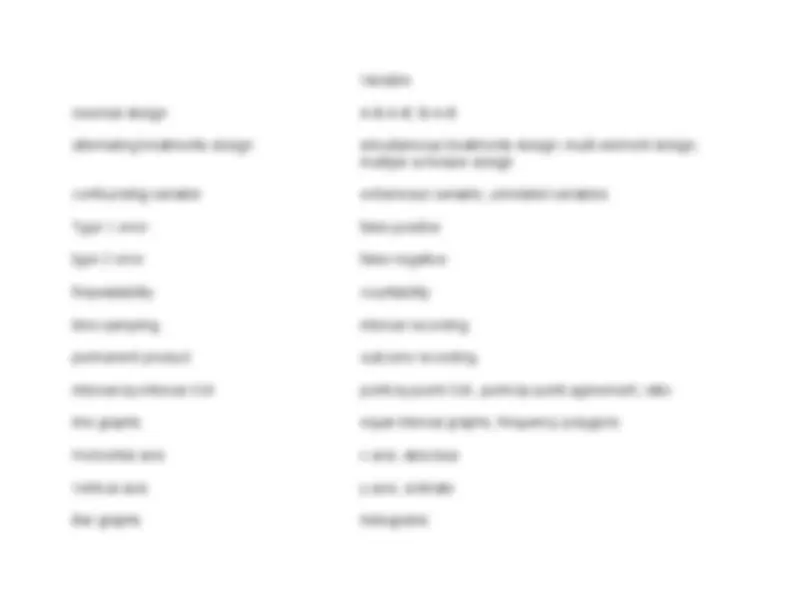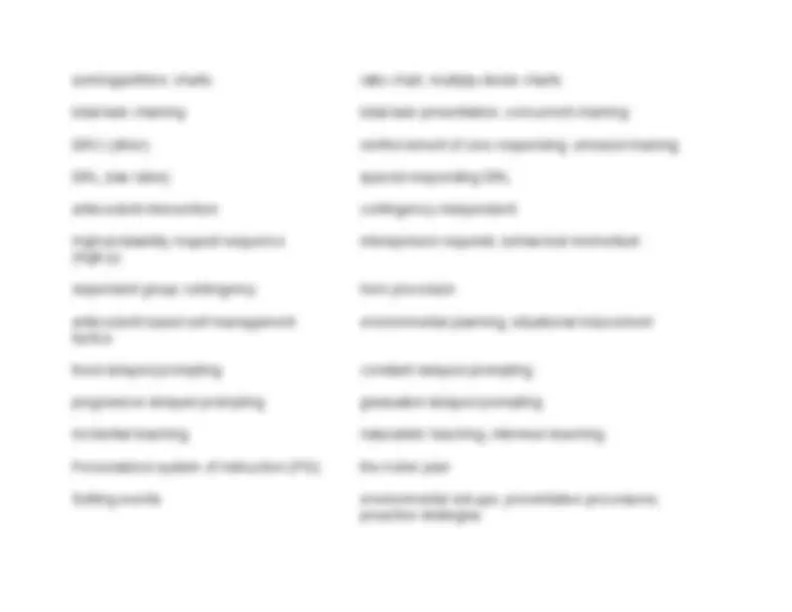





Study with the several resources on Docsity

Earn points by helping other students or get them with a premium plan


Prepare for your exams
Study with the several resources on Docsity

Earn points to download
Earn points by helping other students or get them with a premium plan
Community
Ask the community for help and clear up your study doubts
Discover the best universities in your country according to Docsity users
Free resources
Download our free guides on studying techniques, anxiety management strategies, and thesis advice from Docsity tutors
This is a list of the various AKA's that are used when studying terminology for the BCBA exam.
Typology: Study notes
1 / 5

This page cannot be seen from the preview
Don't miss anything!




Prediction Correlation
Control Causation, play condition
Experimentation Experimental Analysis
Mentalism Spiritual, psychic, subjective, feelings
Hypothetical Constructs Imaginary Concept
Conceptual Analysis of Behaviorism Behavior
Respondent Behavior reflex, unconditioned stimulus- unconditioned response
Respondent conditioning classical conditioning, pavlovian conditioning (SS) stimulus-stimulus pairing; conditioned stimulus, conditioned response
operant behavior S-R-S stimulus response stimulus, three term contingency, ABC
Operant Contingency behavioral contingency, 3-term contingency, ABC
Contiguity temporal contiguity
Automatic reinforcement Sensory, self-stimulatory behaviors,stereotypy
Unconditioned reinforcer/ UCR, primary reinforcer, unlearned
Reinforcement reinforcer
Conditioned Reinforcer/ CR; Secondary reinforcer, learned reinforcer Reinforcement
Generalize Conditioned Reinforcer Generalized reinforcer
Unconditioned punishers/punishment UCP, primary punisher, learned punishment
Generalized conditioned punishers generalized punisher
Automatic reinforcement extinction sensory extinction
Negative reinforcement extinction escape extinction
Discriminative Stimulus Sd
Generalization Gradient Stimulus generalization gradient
Reflexivity Generalized Identity Matching
Rule-governed behavior rule governance, rule control
Contingency-shaped behavior contingency control
EO: behavior altering effect evocative effect
AO: behavior altering effect abative effect
Response generalization response induction
Exemplars teach sufficient examples, multiple exemplar training
Variable
reversal design A-B-A-B; B-A-B
alternating treatments design simultaneous treatments design; multi-element design, multiple schedule design
confounding variable extraneous variable, unrelated variables
Type 1 error false positive
type 2 error false negative
Repeatability countability
time sampling interval recording
permanent product outcome recording
interval-by-interval IOA point-by-point IOA, point-by-point agreement, ratio
line graphs equal interval graphs, frequency polygons
Horizontal axis x axis, abscissa
Vertical axis y axis, ordinate
Bar graphs histograms
semilogarithmic charts ratio chart, multiply-divide charts
total-task chaining total-task presentation, concurrent chaining
DRO (other) reinforcement of zero responding, omission training
DRL (low rates) spaced-responding DRL
antecedent intervention contingency independent
High-probability request sequence interspersed requests, behavioral momentum (high-p)
dependent group contingency hero procedure
antecedent based self management environmental planning; situational inducement tactics
fixed delayed prompting constant delayed prompting
progressive delayed prompting graduated delayed prompting
incidental teaching naturalistic teaching, intensive teaching
Personalized system of instruction (PSI) the Keller plan
Setting events environmental set-ups, preventative procedures, proactive strategies